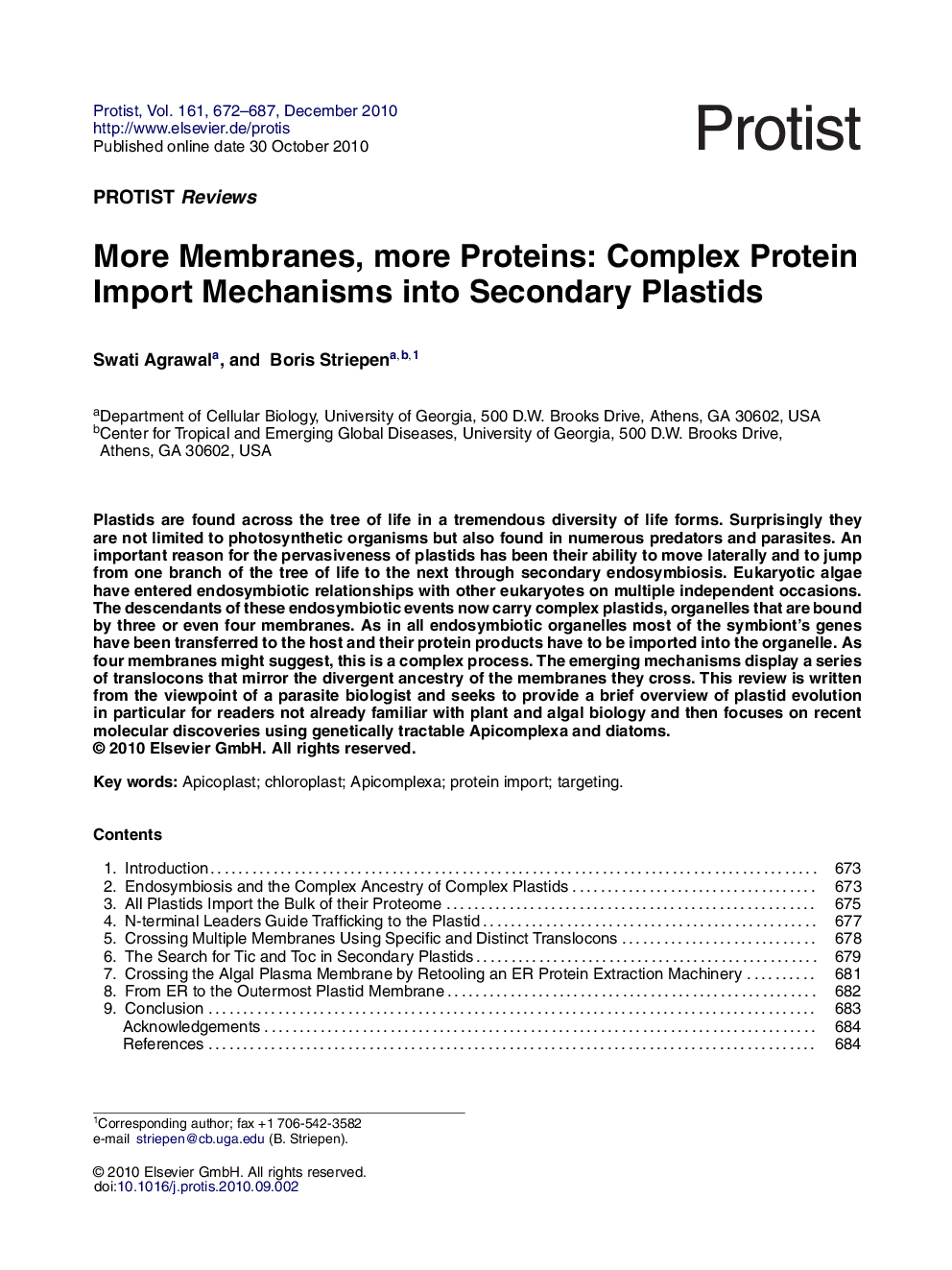| Article ID | Journal | Published Year | Pages | File Type |
|---|---|---|---|---|
| 2062037 | Protist | 2010 | 16 Pages |
Plastids are found across the tree of life in a tremendous diversity of life forms. Surprisingly they are not limited to photosynthetic organisms but also found in numerous predators and parasites. An important reason for the pervasiveness of plastids has been their ability to move laterally and to jump from one branch of the tree of life to the next through secondary endosymbiosis. Eukaryotic algae have entered endosymbiotic relationships with other eukaryotes on multiple independent occasions. The descendants of these endosymbiotic events now carry complex plastids, organelles that are bound by three or even four membranes. As in all endosymbiotic organelles most of the symbiont's genes have been transferred to the host and their protein products have to be imported into the organelle. As four membranes might suggest, this is a complex process. The emerging mechanisms display a series of translocons that mirror the divergent ancestry of the membranes they cross. This review is written from the viewpoint of a parasite biologist and seeks to provide a brief overview of plastid evolution in particular for readers not already familiar with plant and algal biology and then focuses on recent molecular discoveries using genetically tractable Apicomplexa and diatoms.
